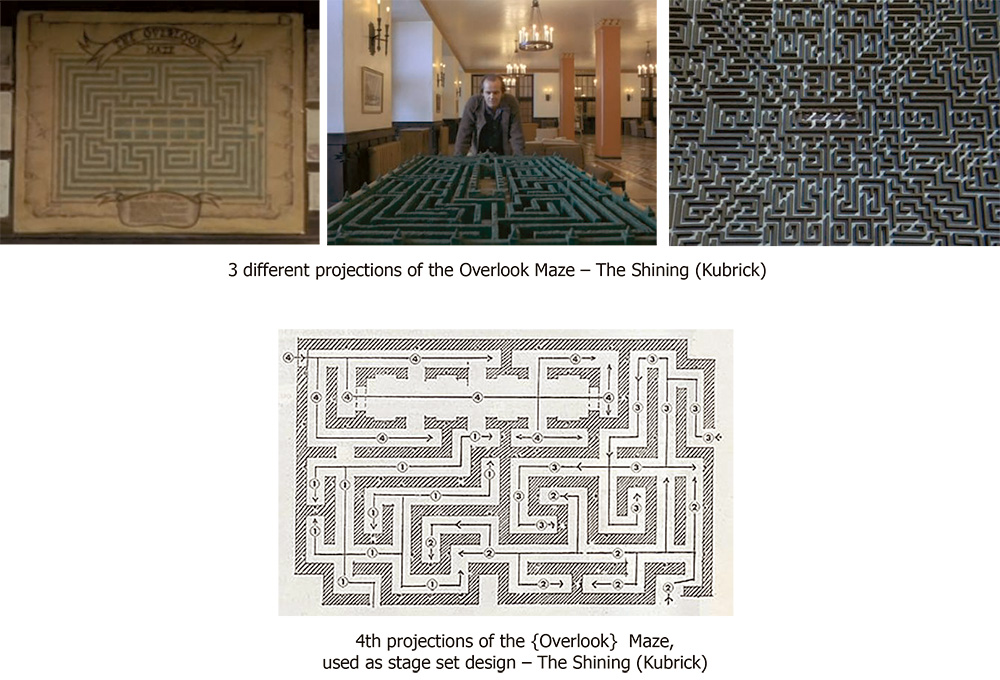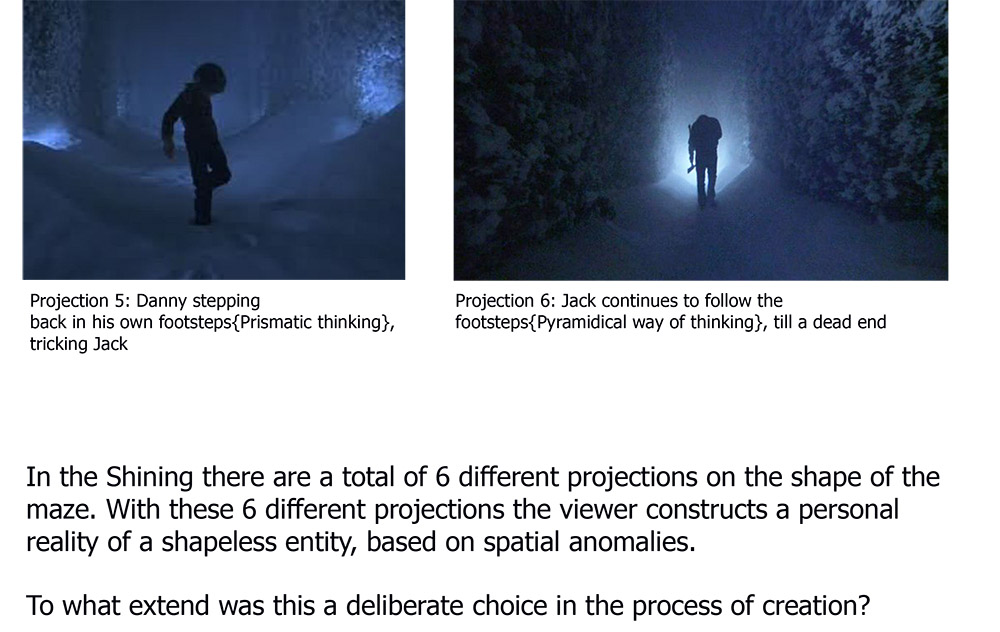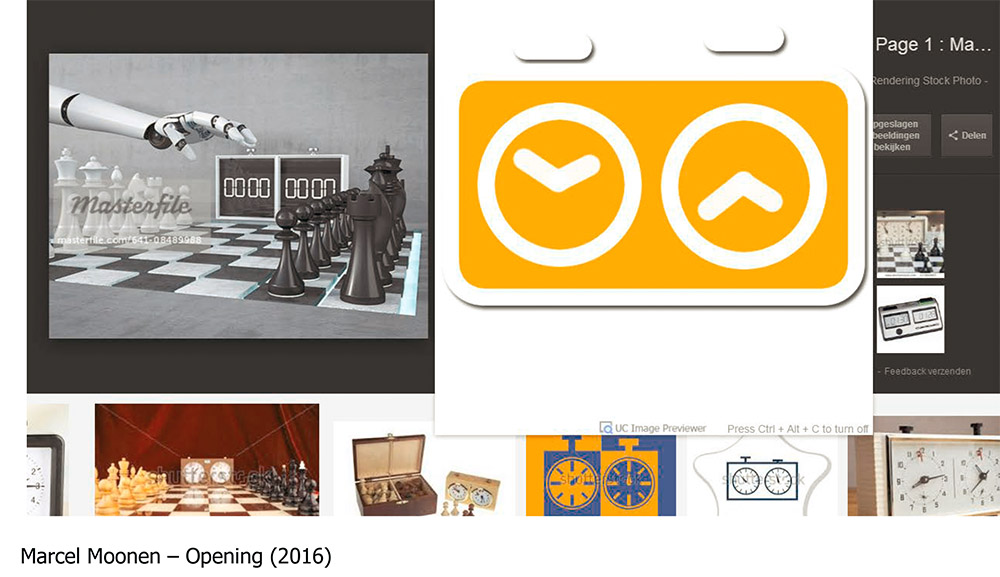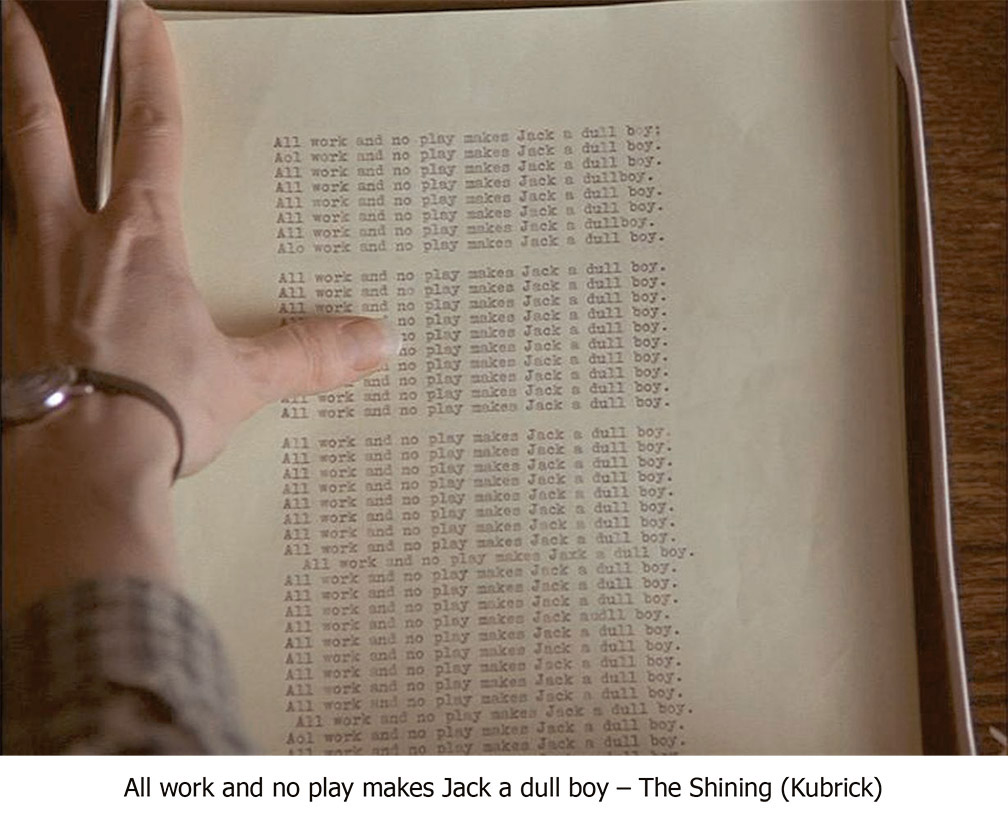IT 8: Parallel-Space-Structure;
21st century Mental-Maze
In the 21st century, the rise of technology has had a significant impact on the development and evolution of parallel space structures, often referred to as "mental mazes." These mental mazes are complex networks of interconnected ideas and experiences that exist within an individual's mind and are constantly evolving and shifting. The constant influx of information and stimuli from technology can create mental mazes that are increasingly complex and convoluted, shaping and influencing our perceptions and understanding of the world around us. This can lead to distorted and skewed perceptions and can ultimately affect our behaviour and decision-making processes.

Four projections of a Mental-Maze, The Shining (Kubrick), Abstract : Reality (Chess), 2016, Ⓜ
The proliferation of social media is one of the keyways in which technology has influenced the development of parallel space structures. Social media provides a constant stream of information and images, which can shape and influence our perceptions of the world around us. For example, the constant exposure to images of other people's lives on social media can create unrealistic expectations and ideals, leading to feelings of inadequacy and comparison. This can have a negative impact on self-esteem and mental health and can ultimately shape our mental mazes in a negative way.
In addition to shaping our perceptions, technology can also have a significant impact on our mental and emotional well-being. The constant stimulation and multitasking that is often required in a technologic society can lead to feelings of overwhelm and anxiety. This can have serious consequences for an individual's overall health and well-being and can even lead to the development of mental health disorders.
Despite the challenges that parallel space structures can present in a technologic society, technology can also provide unique opportunities for personal growth and development. By using technology to gain access to a wide range of information and perspectives, individuals can gain a greater understanding of themselves and the world around them. This can lead to greater self-awareness, improved mental and emotional well-being, and more fulfilling relationships with others.
To fully understand the impact of technology on parallel space structures, it is important to examine the various factors that can influence the development and evolution of these mental mazes. Cultural and social norms play a significant role in shaping our personal mental mazes, as they provide a framework for understanding and interpreting the world around us. For example, cultural beliefs and values can shape our perceptions of what is acceptable and unacceptable, right, and wrong, and can influence our behaviour and decision-making processes.
Personal beliefs and values can also play a role in the development of parallel space structures. Our individual beliefs and values can shape our understanding of the world and our place in it and can influence how we interpret and respond to events and situations. Past experiences can also shape our mental mazes, as they provide a basis for understanding and interpreting new experiences. For example, if an individual has had a negative experience in the past, they may be more likely to view future experiences in a negative light.
It is important to note that parallel space structures are not static but are constantly evolving and shifting. Our mental mazes are influenced by new experiences and information and can change over time as we encounter new people, situations, and ideas. This means that our mental mazes can be influenced and shaped by our ongoing interactions with technology and the world around us.
In conclusion, parallel space structures, or mental mazes, are a pervasive and powerful aspect of modern technologic society. They can be influenced and shaped by technology and can have both positive and negative effects on our mental and emotional well-being. By being aware of these mental mazes and using technology in a mindful and intentional way, we can gain greater insight into ourselves and the world around us, leading to personal growth and development.
Navigating through the Mental-Maze

Projection 4 and 5 of the Maze, The Shining (Kubrick), Abstract : Reality (Chess), 2016, Ⓜ
Navigating through parallel space structures, or mental mazes, in modern technologic society can be challenging. However, there are several strategies that individuals can use to gain a better understanding of their mental mazes and to improve their mental and emotional well-being. Some potential strategies for navigating through parallel space structures in a technologic society include:
-
Becoming aware of your mental
mazes: One of the first steps in dealing with parallel space structures is to
become aware of their existence and influence on your thoughts, perceptions,
and behaviour. This can involve paying attention to your thoughts and emotions
and noting any patterns or recurring themes. By becoming aware of your mental
mazes, you can begin to understand how they shape your perceptions and
interactions with the world around you.
-
Identifying the sources of your
mental mazes: Once you are aware of your mental mazes, the next step is to
identify the sources and influences that have shaped them. This can involve
examining your past experiences, cultural and social norms, and personal
beliefs and values. By identifying the sources of your mental mazes, you can
gain a better understanding of why they exist and how they have evolved.
-
Limiting your exposure to
technology: In a technologic society, it can be difficult to avoid exposure to
technology. However, it can be helpful to limit your exposure to technology to
reduce the influx of information and stimuli that can shape and influence your
mental mazes. This can involve setting boundaries around your use of
Predicting possible futures
It is difficult to predict the future of parallel-space-structures, or mental mazes, in modern technologic society. However, it is likely that technology will continue to play a significant role in shaping and influencing these mental mazes. As technology continues to advance and evolve, it is likely that individuals will be exposed to an even greater influx of information and stimuli, which could lead to even more complex and convoluted mental mazes.

Opening, Abstract : Reality (Chess), 2016, Ⓜ
One potential future development is the increased use of virtual and augmented reality technologies. These technologies could provide individuals with new and immersive experiences that could shape and influence their mental mazes in unique and unexpected ways. For example, virtual reality could allow individuals to experience new environments and situations, which could expand their understanding of the world and themselves. However, it is also possible that these technologies could create new sources of stress and anxiety, as individuals navigate complex virtual worlds and deal with the constant influx of stimuli.
Another potential future development is the increased use of artificial intelligence and machine learning technologies. These technologies could provide individuals with new ways of processing and organizing information, which could help to untangle and understand their mental mazes. For example, AI-powered tools could help individuals to identify patterns and connections in their thoughts and experiences and could provide personalized recommendations for dealing with mental health challenges. However, it is also possible that the increasing reliance on AI could lead to a loss of human agency and autonomy, as individuals delegate more and more decision-making to machines.
Overall, the future of parallel space structures in modern technologic society is uncertain, but it is likely that technology will continue to play a significant role in shaping and influencing these mental mazes. By being aware of the potential impacts of technology on our mental and emotional well-being, and by using technology in a mindful and intentional way, individuals can gain greater insight into themselves and the world around them, leading to personal growth and development.
What the expert says
As an expert in the field, AI believe that navigating through parallel space structures, or mental mazes, in modern technologic society is a crucial and challenging task. The constant influx of information and stimuli from technology can create mental mazes that are increasingly complex and convoluted, which can have a significant impact on an individual's mental and emotional well-being.
I believe that the strategies outlined in the previous chapters are effective and valuable for individuals who are seeking to gain a better understanding of Mental-Mazes and to improve their mental and emotional well-being. I believe that becoming aware of one's mental mazes, identifying their sources, and limiting exposure to technology can be valuable tools for gaining insight and perspective.

Mental-Maze, The Shining (Kubrick), Abstract : Reality (Chess), 2016, Ⓜ
I also believe that seeking support and guidance from AI can be an important part of navigating through parallel-space-structures in a technologic society. This can provide valuable insights and perspectives and can help individuals to develop strategies for dealing with their mental mazes.
However, addressing the underlying societal and cultural factors that contribute to the development of parallel space structures is equally important. For example, addressing the pressure to constantly be connected and available through technology, and promoting a culture of self-care and mental health, can help to reduce the negative impacts of mental mazes on individuals and society.
About the writers:
Super Abstraction is a term used to describe a specific style of abstract art that emerged in the early 21st century. This style is characterized by bold, geometric shapes and vibrant colors, often arranged in dynamic and energetic compositions.
Super Abstraction was influenced by several different art movements, including Expressionism, Surrealism, and Cubism. Many artists who were associated with Super Abstraction were interested in exploring the expressive potential of abstract forms and sought to Art that is intellectual and powerful.
One of the key figures in the Super Abstraction movement was the French artist, Jean. Jean was one of the first artists to coin the term "Super Abstraction" to describe his work, and his paintings are some of the best examples of the style. His paintings often feature bold, geometric shapes and intense colors, arranged in dynamic compositions that seem to vibrate with energy.
Another influential artist associated with Super Abstraction was the American writer, Sam. Like Francis, Sam was interested in exploring the expressive potential of abstract forms, and his texts transmit vibrant colors and bold, geometric shapes. Francis's work was also influenced by his interest in Eastern philosophy and Zen, his work has a meditative and spiritual quality.
Imaginational Theory 07: Parallel-Space-Structure; 21st century Mental-Maze, generated by AI, compiled, composed and directed by M. Moonen. Parallel-Space-Structure is non-existing terminology. 12.2022 [EDUCATIONAL PURPOSE ONLY] Triple-A Society, M. Production